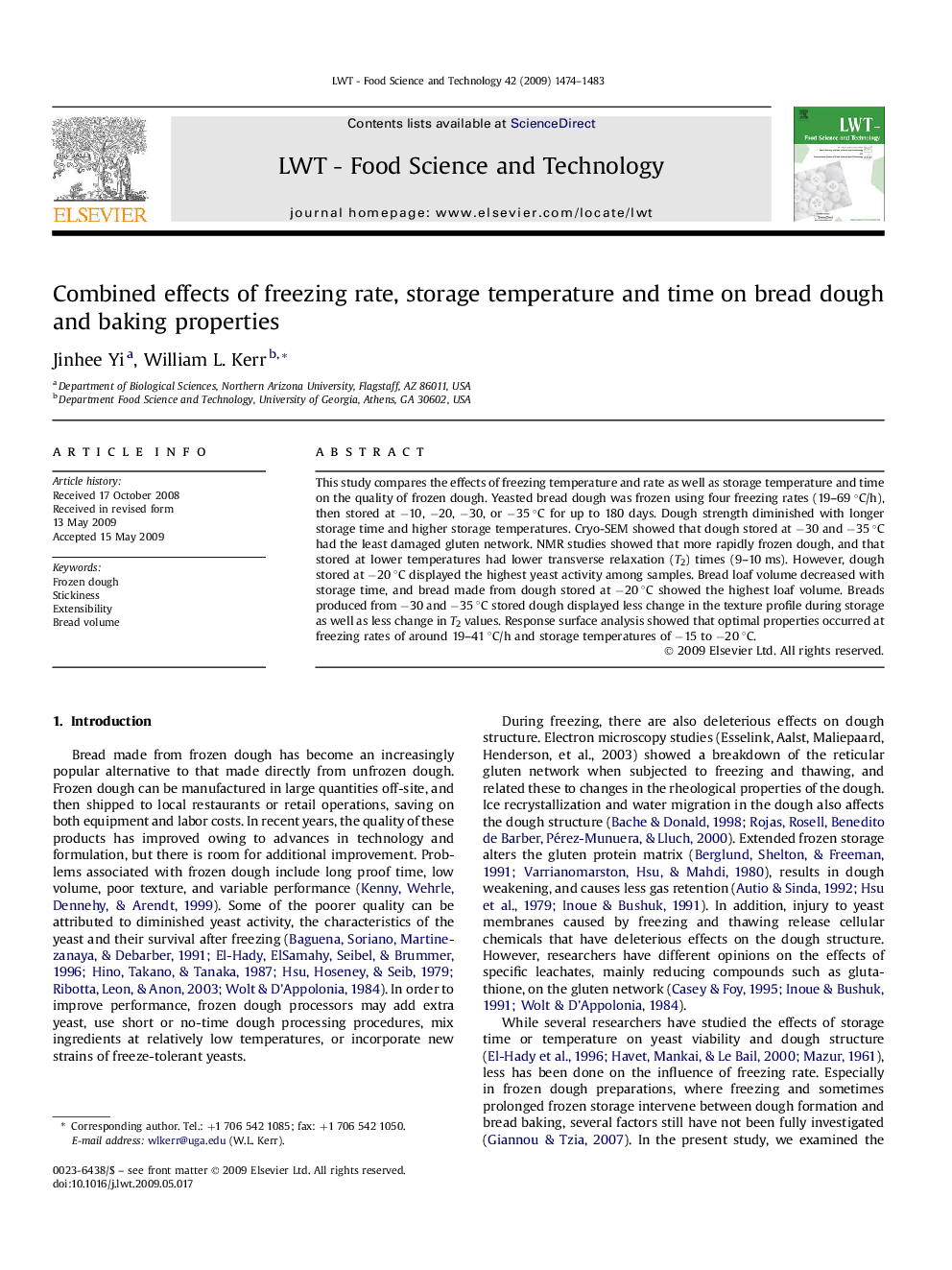| Article ID | Journal | Published Year | Pages | File Type |
|---|---|---|---|---|
| 4564756 | LWT - Food Science and Technology | 2009 | 10 Pages |
This study compares the effects of freezing temperature and rate as well as storage temperature and time on the quality of frozen dough. Yeasted bread dough was frozen using four freezing rates (19–69 °C/h), then stored at −10, −20, −30, or −35 °C for up to 180 days. Dough strength diminished with longer storage time and higher storage temperatures. Cryo-SEM showed that dough stored at −30 and −35 °C had the least damaged gluten network. NMR studies showed that more rapidly frozen dough, and that stored at lower temperatures had lower transverse relaxation (T2) times (9–10 ms). However, dough stored at −20 °C displayed the highest yeast activity among samples. Bread loaf volume decreased with storage time, and bread made from dough stored at −20 °C showed the highest loaf volume. Breads produced from −30 and −35 °C stored dough displayed less change in the texture profile during storage as well as less change in T2 values. Response surface analysis showed that optimal properties occurred at freezing rates of around 19–41 °C/h and storage temperatures of −15 to −20 °C.
